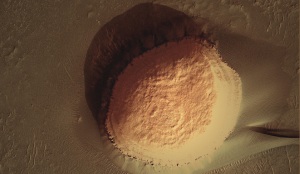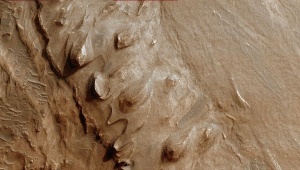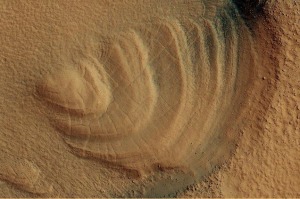Welcome to Carnival of Space #118, here at CUMBRIAN SKY! This is my first time hosting the Carnival, so a huge THANK YOU to Fraser, for letting me join the exclusive club of blogs lucky enough to have hosted what has to be the biggest and best weekly collection of space and astronomy writing on the net! 🙂 If you’ve visited my blog before you’ll know all about it, and me, already. If this is your first visit then welcome to the online home of a self-confessed amateur astronomy nut, spaceflight enthusiast, astropoet and frustrated martian! I live in Kendal, beautiful and historic birthplace of the famous astronomer Sir Arthur Eddington. The astronomical society of Kendal – unsurprisingly named “The Eddington Astronomical Society”! – is currently holding a big exhibition of astronomy pictures, exhibits and attractions in our town’s fantastic museum, so if you’re in or coming to the area I hope you’ll call in and take a look at “Our Amazing Universe!”
Ok, shameless plug over, let’s get on with this week’s Carnival!
By the way, in the hope of prompting our favourite sleepy head space probe, the Mars Reconaissance Orbiter, to wake up – at the time of writing it’s gone into Safe Mode again – I’m going to scatter some of my crops and colourisations of MRO images through the Carnival. They are all real MRO pics of real places on Mars, I’ve just enhanced/tweaked/messed about with them, to make them more artistic, and to bring out what I see to be the true beauty of that magnificent world. So no, they’re not meant to be 1000% accurate in terms of colour, ok? They’re just unashamedly pretty pictures, and I’m hoping they’ll inspire first time Carnival visitors to spend some time browsing the galleries of stunning images at the MRO site, and get MRO some of the love it deserves while it’s feeling poorly. There will be a few non-MRO pics too. Click on any pic to bring up a larger version.
First up we have Lounge of the Lab Lemming’s report on yet more definition funny business from the IAU. Thankfully it’s a spoof report – although reading it I could easily imagine “The Big Bang Theory”‘s Sheldon taking it totally seriously, and I have to admit that I’m worried about someone in the IAU reading it and thinking “Actually, that’s not a bad idea…” after what they did to Pluto…
Next we have “Finding The Fractals“, in which Twisted Physics’ Jennifer Ouellette points us all towards a fascinating new website where you can design your own fractal patterns Not sure what fractals are? Jennifer’s post will reveal all, but I absolutely love this line: “If a hurricane is a chaotic system, then the wreckage strewn in its path is its fractal pattern”… 🙂
Walk on around the Carnival with me now and you’ll see we’ve come to Nancy Atkinson’s post for Universe Today. “UT”, as it is fondly known by its legions of readers, is always excellent, and is now required daily (sometimes hourly! Nancy is so prolific!) reading. And no, I’m not just saying that ‘cos we share surname! We’ve all drooled over the breathtaking images sent back by Cassini, Spirit and Opportunity and, more recent, LRO, but how many of us have ever stopped and wondered just how those fragile metal butterflies flit from Earth to their destinations so accurately? Nancy’s post for this week’s Carnival looks at how robotic spacecraft get to a specific and precise destination, and sings about the unsung heroes who make space missions possible.
The space enthusiast community on the internet is a pretty wild place. There are many sites that leave you exhausted after visiting them, they’re so busy, frantic and angst-ridden. There are, however, a few oases of calm here and there, and one of them is Emily Lakdawalla’s Planetary Society blog. Emily covers all the major astronomical and space exploration stories on her blog, which is read by countless thousands of people worldwide. This week Emily’s post for the Carnival of Space concerns “WISE“, the Wide-field Infrared Survey Explorer, a NASA mission you’ve probably not even heard of, that could turn out to be very significant indeed. Why? Well, as Emily explains: “It’s similar to past all-sky survey missions like COBE (the Cosmic Background Explorer, whose DIRBE instrument imaged the whole sky in near-infrared wavelengths) and IRAS (the Infrared Astronomical Satellite, which imaged the whole sky in mid-infrared wavelengths). However, WISE has hundreds of times the sensitivity of IRAS, and a whopping 500,000 ties the sensitivity of COBE DIRBE.” Definitely a mission to watch, and I’m sure Emily will continue to keep us informed on its progress via her blog.
In her Chandra Blog, astronomer Kimberley Kowal Arcand celebrates the 10 year anniversary of the release of the historic “1st Light” image by Chandra orbiting observatory, showing the supernova remnant Cassiopeia A.
Astronomy can be an expensive hobby – big telescopes can cost many thousands, and it’s easy to become obsessed with buying the latest and greatest solar filters, GoTo drives and software – but it can be an inexpensive hobby too. This week’s offering from the Cheap Astronomy blog (ha! did you see what I did there! 🙂 ) of Steve Nerlich is a great podcast looking at space advocacy. Will aliens laugh at our jokes? Listen to the podcast and find out…
Astronomers usually gather in fields, parks and schoolyards, but you can sometimes find them on street corners too… and on the Steve’s Astrocorner blog (ok, ok, I’ll stop it now!) you can read a “OK What Gives? Is It Meteoroids , Meteors or Meteorites?”, which does a great job clarifying the difference between the familiar terms – which many, many people STILL mix and get confused by. ( I’m going to bookmark this post and have it on hand, ready to send to any of my children’s science book editors who ask me about this, it will save me a LOT of time!)
Walking on around the Carnival we now come to collectSPACE‘s post looking at the story behind how mission patches for the current shuttle mission up to the ISS have – ahem – soared, for different reasons, becoming instant collectors items. The first mission patch turned out to have an error in its design – you’ll have to read the post for yourself to see what it was – which made it very collectable, like a wrongly-printed stamp or bank note. The second patch celebrates the delivery of a treadmill to the ISS. Yes, you read that right, a treadmill. Why all the fuss? Well, unless you’ve been living in a pit on Mars for the past year you’ll know that the COLBERT treadmill wasn’t going to be called that originally, of course, but following that historic vote to name an ISS module, which fans of The Late Show’s Stephen Colbert won, NASA had to find something to name after the comedy show’s star, so they christened the treadmill after him. Quick thinking NASA! (but they are still the winners of this week’s prestigious “D’oh!” award)
Astroengine is always a good read, and this week, in his post “ ‘Knowing’ how solar flares DON’T work!” our clearly frustrated astroengineer Ian O’Neill takes a post movie-viewing look at the fact – and the fiction – behind solar flares, and in doing so very generously guarantees all his readers sleepless nights by describing exactly what would actually happen if a major solar flare hit us. The good news is Hollywood has got it totally wrong. The bad news is, if it happened, the consequences would be far worse than even Hollywood could imagine…
Ah, here we are at the Centauri Dreams blog of Paul Gilster. You’ll like this, I promise you. “Building Infrastructure: The Tether Option” discusses space tethers and their many uses, from raising satellite orbits to interplanetary propulsion and still more exotic possibilities. The article reviews Michel Van Pelt’s new book on space tethers and discusses how they could even be used to deliver cargo from space directly to the surface of the Moon. I’ve been fascinated by space elevators ever since reading Kim Stanley Robinson’s “Mars” trilogy, so I really enjoyed this post.
If you are into astronomy, have a computer and an internet connection, it’s now The Law that you have to read Phil Plait’s “Bad Astronomer” blog, everyone knows that. This week Phil shares with the world his joy at finally receiving his Galileoscope in a detailed look at the instrument, how it works, and what can be seen through it – which, surprisingly, turns out to be “a lot!” Galileoscopes are a great, fun idea for IYA2009, and I’m sure they’ll both help to introduce a lot of new people to the wonders of the night sky, and maybe remind a few weary old timers why they fell in love with the night sky in the first place… I’m afraid Phil doesn’t get an award this week, because frankly having him here on my blog makes me feel all “I’m not worthy! I’m not worthy!” like Wayne, so I’d be too embarrassed to go over and give him anything…! 😉
Adam Crowl’s Crowlspace blog always has something interesting to read, and this week his contribution to the Carnival is a fascinating 2 part look at some of the science behind well known worlds from science and fantasy fiction, particularly the location of a solar system’s habitable zone for differing degrees of wetness. As a huge fan of anything exoplanety (not a real word, I know, but hey, it fits) I found this a great read, and you will too by going here: Part 1 Part 2
I mean absolutely no offence whatsoever when I say that Bruce Cordell’s blog 21st Century Waves often leaves me scratching my head. Reading this blog always leaves me feeling a) very, very impatient for the future to arrive, and b) like I’ve been smacked in the head by a time machine, because it looks at the future in fascinating ways in posts that I sometimes have to read a few times before a hand comes out of the screen, slaps me, and I suddenly “get it”. “Kepler, Carl Sagan, and the Guzman Prize — Our Century-Long Search for Space Aliens” deals with the – as yet under-appreciated – significance and promise of the Kepler mission. I honestly can’t think of a soundbite way to do justice to this blog or this post, so I’ll just promise you that 21st Century Waves is never less than an absolutely fascinating read, and urge you to go take a look for yourself.
Weird Warp is a new blog to me, in that I don’t recall seeing it in the Carnival before, so welcome! (and if I’m wrong, welcome back!) I had a quick browse thru the archives while putting this CoS together and there really is some fascinating reading here, and this week’s Carnival post “Nuclear fusion and its future uses in spacecraft” is no exception. There’s a lot of talk about how nuclear propulsion is The Way Forward for space exploration, but what’s the reality behind this? Read this post and find out!
For this week’s Carnival, Mang’s Bat Page (and no, I’m not going to explain why the blog is called that; it’s almost a legal requirement that every visitor to the Carnival has to find that out from the blog itself!) brings another update on efforts to preserve the David Dunlap Observatory and surrounding lands, and asks you to sign a petition. Care about astronomy and the night sky? Read up on this observatory and the campaign to save it.
The AART scope blog is another new one to me, but I was happy to find Peter Lake’s contribution to this week’s Carnival in my in-box because, as a dedicated observer, it’s always nice to read about someone actually looking at something in the sky! Peter tells us in his post how excited comet watchers have been following with interest the prospects of Comet 217/P – Linear.
These are – to say the least – “interesting times” for NASA, what with the Ares X1 test fast approaching and the Augustine Commission revealing to the world what we space enthusiasts already knew – that NASA hasn’t got enough money to send astronauts any further than the airlock of the space station. In his thought-provoking post at The Next Big Future blog, Brian Wang provides us with a timely round-up of all the recent net reports regarding how the Russian Space Agency and Nasa try to drum up bigger budgets with Mars talk. Reality seems to be no budget increases and using private companies like SpaceX. (if SpaceX can deliver on its cheaper development path). I find all this very depressing, thinking that unless some more money is given to NASA astronauts are going to be exiled in LEO for the foreseeable future. Western astronauts, that is. I’m sure the Chinese and Indian space agencies have other plans.
For this week’s Carnival, CC Peterson, who writes at The Spacewriter’s Ramblings, brings us the story of how “Plutokiller” (oh, I think he might regret giving himself that Twitter nickname in years to come!) Mike Brown figured out that there’s methane fog on Titan. It’s a heck of a thing to imagine standing on Titan’s surface with wisps of methane fog swirling around you. It’s a wonderful story, and with all that mist drifting about it sounds like Titan will be a great, mega-spooky place to spend Halloween in years to come! (Award: the feathered quill award“Most poetic post title of the week”)
How many times a week – a day? – do you ask yourself “Why aren’t we back on the Moon yet? Why aren’t we on Mars? Where’s my rotating space station V?” Why haven’t we begun to live properly in, let alone conquer, space? Habitation Intentions’ Daniel Sims wonders if the education system might be at fault. Read why in this intriguing and extremely well-argued post. I only found this blog a few weeks ago but it’s essential reading now.
“Twinkle twinkle little star” is a lovely nursery rhyme, of course, and when you think about it, hearing that song for the first time is probably everyone’s first real brush with the world of astronomy. But the truth behind that well-loved song is that ‘twinkling’ is just another word for ‘distortion’ to an astronomer. How do modern ground-based telescopes and their users get around that distortion? In her entertaining and informative contribution to this week’s Carnival, Astropixie Amanda Bauer tells us what it’s like to observe from Mauna Kea, seeing the giant laser shooting into the sky from the Gemini telescope, and explains how the laser is used by adaptive optics to improve image sharpness. Reading this post made everything much,um, clearer..! (sorry, couldn’t resist it!)
Over at Commercial Space, Chuck Black compares NASA to General Motors, suggesting, sadly, that NASA no longer has “the Right Stuff” and predicting that the future of manned space exploration may well belong to private companies and entrepreneurs. Chuck’s award – an Oliver Twist-style begging bowl with “Please Sir, we want some more” inscribed on it, very useful for meetings at the White House…
Finally, wrapping up the Carnival this week – and illustrating perfectly how the Carnival of Space has grown into a truly international event, open to and enjoyed by people from countries all around the world – Malaysian astronomer Teoh Hui Chieh swoons – as I and many others did – over an image of Erlanger Crater returned by LRO. The image is just breathtaking, a ring of light against a black velvet darkness, but it’s not just jaw-droppingly dramatic, it increases the chances that there might actually be deposits of ice on the floors of deep lunar craters, for future generations of lunar explorers and settlers to use. I’m not going to post the image here, I want that treat to be your reward for visiting Teoh’s excellent blog, My Dark Sky.
UPDATE: Apologies to Ian Musgrave for not including his “Nibiru it is not” post from his Astroblogger blog. Ian’s Carnival offering this week is an enlightening piece explaining that an image from Google Sky which is claimed to show the fantasy doom planet ‘Nibiru’ is something completely different, something even more fascinating perhaps. Great bit of detective work there Ian, and for that you get the “Shelock Holmes puffing pipe” award!
Well, that’s all folks! CUMBRIAN SKY is proud to have been your host this week and hope you’ve enjoyed all the entries. Thanks to all the contributors for this week’s entries, and for all their blogging, week after week. Blogs are often dismissed in the traditional media as the worthless witterings of self-promoting web geeks, but at a time when the very same mainstream media is dumbing down, and placing more and more importance on reporting celebrity break-ups and scandals, it’s clear that the responsibility for reporting on and explaining science news has been taken over by bloggers, so everyone featured in the Carnival deserves praise for taking the time and trouble to do that.
Ok, I’m done, time to take down the Carnival tents, pack away the stalls and give the field back to the farmer. Next week the Carnival of Space moves on to another blog – I’ll see you all there!
Filed under: Uncategorized |
























Hey thanks for the nice plug! There’s a Part III coming soon, discussing further the role of clouds and hazes, as well as just how wet Venus once was and just how an ice moon like Titan can be clement – if only briefly.
Some of those pics you’ve got are very cute – the MER and the droid (from “Silent Running”) for example – but some of those Mars shots… are they for real? Or tweaked?
Well done Stu!
[…] 118th Carnival of Space is hanging tight at Cumbrian Sky. In case you missed an news for the Universe this week, it’s the watering hole of the cosmos. […]
Love it! Thanks Stu, great Carnival. I especially like some of the “artefacts” you discovered on Mars 😉
Cheers, Ian
Hi Stu,
Thanks for your comments about 21stCenturyWaves.com.
I’m often as surprised by my posts as you are!
Once you realize that human nature and the laws of economics have been driving great explorations and MEPs for the last 200+ years, it makes the future clearer.
But since most of us (including me) are still saturated by short-term thinking, the results often seem surprising.
Thanks again…Bruce
thanks for the great summary – i appreciate the pun, too 🙂
amanda
Fantastic images (loved the silent running droid) and a lovely carnival. But my submission about the weird things you can find in Google Sky appears to have not made it through Nibiru it is not.
Cheers! Ian
Thanks for updating the Carnival with my post Stu. Cheers! Ian
[…] of Space #118 Go over to Cumbrian Sky for this week […]
[…] week the Carnival is at Cumbrian Sky. Thanks to Stuart Atkinson of Cumbrian Sky for his kind comments about […]
[…] missed a few, but you shouldn’t. Check out #112, #113, #114, #115, #116, #117, #118, #119, and […]
[…] Music of the Spheres. The 119th Carnival of Space paid a visit to the Planetary Society Blog. The 118th Carnival of Space was once again at Cumbrian Sky. The 117th Carnival of Space stopped by Simostronomy. The 116th […]
It was certainly interesting for me to read this article. Thanks for it. I like such topics and everything that is connected to this matter. I definitely want to read a bit more on that site soon.
Avril Kuree
Intresting aricles you got here.
It will be intresting to find anything more concerning this topic.
Thx you for inform that information.
With best regards Agela!!
[…] prezzi rolex prices rolex replica rolex serial numbers rolex submariner rolex submariner price rolex sweep rolex sweep skepta rolex sweep vandalism remix Click here to cancel […]
[…] tag heuer monaco tag heuer monaco gulf tag heuer […]
you may have an incredible blog here! would you like to make some invite posts on my blog?
[…] Big Future Week 120 – Music of the Spheres Week 119 – Planetary Blog Week 118 – Cumbrian Sky Week 117 – Simostronomy Week 116 – Habitation Intention Week 115 – New Frontier […]
I do agree with all of the ideas you’ve presented in your post. They are very convincing and will certainly work. Still, the posts are too short for newbies. Could you please extend them a bit from next time? Thanks for the post.